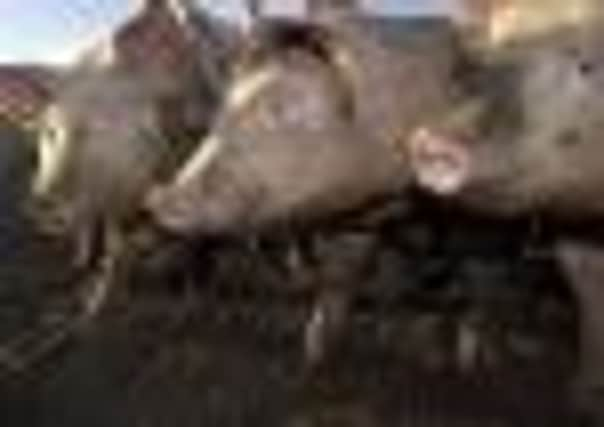‘Walking the Line’ to ensure pig welfare


But before the rush started, there was time this week for industry representatives, including farmers, to take up a British Pig Executive invitation to ‘Walk The Line’ in what everybody still calls the Malton Bacon Factory.
Now part of Dutch-based Vion Foods, it employs 1300 people at peak times and takes a third of Yorkshire’s butcher-ready pigs, along with cheaper supplies from Holland, to make pork, ham, bacon and pizzas.
Advertisement
Hide AdAdvertisement
Hide AdOther pig processors have been in the news, against their will, for cruel or sloppy practices during collecting and stunning, when hands get frustrated by breakaway animals and use violence, or misuse electrical stunners, to get them back into line.
One purpose of the Malton tour was to show off a new stunning process which the plant spent £1.5m on last year. Pigs find themselves being ushered into a gondola by automatic gates. It drops into a pit filled with CO2 where they fall unconscious in 30 seconds. When they are tipped out, ready for the fatal “sticking”, they are still.
It is as quiet and panic-free a process as you can expect on an industrial killing floor and the results are measurable in the end products of the factory, we are told, in terms of lowered levels of lactic acid – a stress-response product which tends to dry out the meat
A line manager tells the Yorkshire Post: “It has changed our lives, never mind the animals.”
Advertisement
Hide AdAdvertisement
Hide AdOne reason for the tour was to demonstrate the various reasons suppliers lose money in penalties for imperfections. Pleurisy is probably the commonest – an inflammation of the lung casings which requires extra cleansing of the body cavity
The Meat Hygiene Service has representatives inspecting carcases and offal and reporting as necessary. But at this plant and some other big ones, including Cranswick’s at Hull, BPEX offers an additional service – veterinary inspection of a selection of pigs from participating farms, on set dates, and a report on symptoms which may not bother the plant or the government but may be a problem for the farmer, because health affects growth. These inspections have been made free for the time being. Call Helen Clarke on 0247 647 8796.
Another problem which holds up ‘the line’ is black hair on the pigs. It is “a nightmare”, said site manager William de Klein, because modern food standards require a hairless joint and the black bristles are hard to get out. The usual solution is to cut off the skin, with some fat attached, and charge the farmer for a couple of kilos of discard. One topic of the day was the looming prospect of a requirement to cut salmonella contamination on raw pork. Vion reckons it is already good at this. Which leads on to the possible future importance of slaughterhouse identification to the customer – who might want to vote for particular standards of welfare and hygiene.
Mainly, Vion stays anonymous. But for those who want to support the Malton Bacon Factory, it can be identified when it has done the packaging – by the code UK 2060 in a little oval on the product label.
Tackling salmonella threat
Advertisement
Hide AdAdvertisement
Hide AdBPEX health schemes manager Katrin Turvey said now the chicken business had cleaned up its act, raw pork was second to eggs as a source of salmonella – usually dealt with by cooking and good kitchen hygiene but a target area for improvement by the European Food Safety Authority. The UK has more contamination than most and one likely reason is that we have more pigs living on straw rather than slats.
That means hard choices, in terms of pleasing the consumer, unless the industry can find other ways to tackle the problem. She is looking for farmers to take part in voluntary experiments.